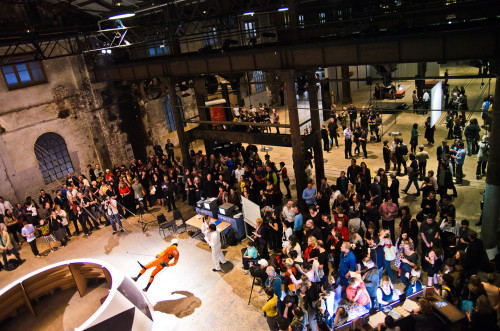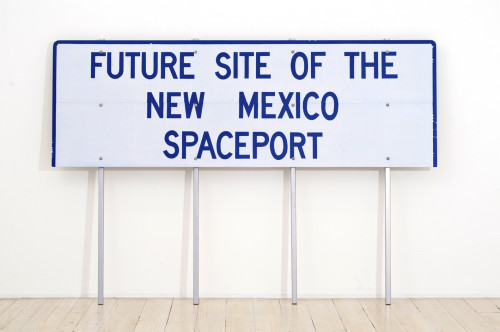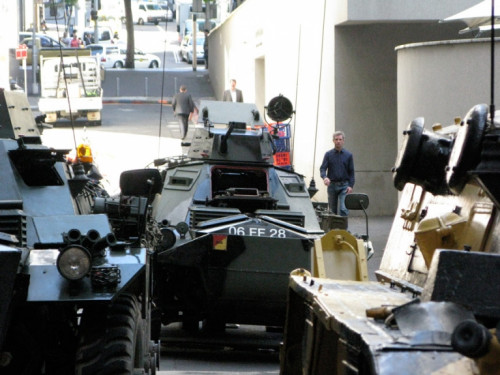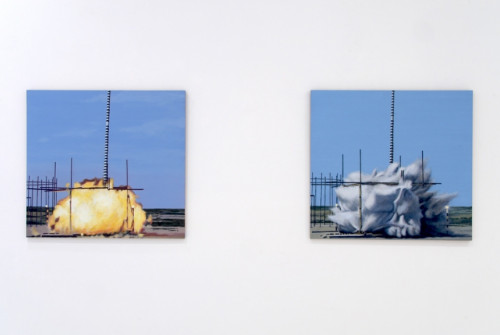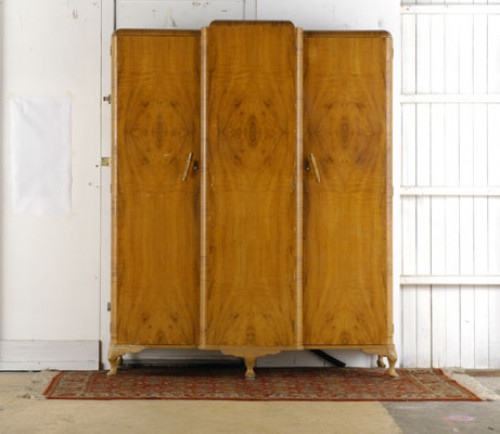Projects
2025
Exhibiting artists: Ron Adams, Polly Borland, Chris Dolman, Belem Lett, Adam Norton, Philjames, Genevieve Felix Reynolds
Read more...
Exhibiting artists: Ron Adams, Reg Bryson, Chris Capper, Rod Denson, Chris Dolman, Sarah Edmondson, Emily Galicek, Jeremy Kirwan-Ward, Adrian McDonald, Adam Norton, Nuha Saad, Sherna Teperson, Darren McDonald, Michael Rolfe, Helen Smith. Curated by George Adams
Read more...
Exhibiting artists: Isabel & Alfredo Aquilizan, Karike Ashworth, Martin Bell, Penny Byrne, Patrick Connor, Rod Coverdale, Alex Cowley, Claire Healy & Sean Cordeiro, Emma Gardner, Shaun Gladwell, Franck Gohier, David Griggs, Reg Mombassa, Adam Norton, Phoebe Paradise, Brian Robinson, David Sawtell, Ian Smith, Karen Stephens, Brendon Tohill and Paul White.
Curated by Jonathan McBurnie.
Read more...
These works are based on found book covers, rediscovered on research trips to the dusty shelves of the library of The British Interplanetary Society. By selecting and re-painting them in fresh, vibrant vinyl paint they gain a new lease of life. Although quite old-fashioned they now become posters and slogans that strangely foresee the current era of space exploration.
Read more...
The Lock-Up is delighted to welcome Adam Norton to the AIR program where the artist will continue research and local investigations for upcoming projects.
https://thelockup.org.au/adam-norton-artist-in-residence/
Read more...
2024
Caboolture Regional Art Gallery
George Miller’s genre-defining Mad Max film series has grown from a tense, low-budget Ozsploitation cult hit into a sprawling post apocalypse action opera, redefining science fiction along the way.
Read more...
Bathurst Regional Art Gallery
As part of its 250 year anniversary celebrations, Pictura has approached 25 artists to create a work of art in the shape of a flag. These flags will be lined up as a festive parade along the Voorstraat in the city of Dordrecht, the Netherlands.
Read more...
Longing for Boijmans is a special project in Museum Boijmans Van Beuningen, which is celebrating its 175th anniversary. 'The Overpainting Painting' (Overschilderschilderij) was exhibited at the museum in 2014, when it already had 100 layers of overpainting. During Longing for Boijmans, visitors will first see Eva Krause’s layer, then Adam Norton will add to The Overpainting.
Read more...
Taking its title from J. G. Ballard’s nostalgic short story of impending doom, The Garden of Time presents the work of six diverse artists ranging from Northern Europe across to Western Australia. With playful and very different approaches to painting, photography or object-making, the thoughtfully curated works in the exhibition coalesce and radiate in surprising ways, like a garden gone wild. Despite an imploding world outside, they invite quiet contemplation as they tease-out fresh perspectives, showcase cultural diversity, and cultivate connections between Australia and the Netherlands.
Read more...
George Miller’s genre-defining Mad Max film series has grown from a tense, low budget Ozsploitation cult hit into a sprawling post apocalypse action opera, redefining science fiction along the way. A complex and compelling mashup of biker, S/M, gearhead, Queer and beefcake cultures and their associated aesthetics, Mad Max has become a cosplay favourite, and has become massively influential in cultural terms, being ripped off, satirised and idolised by sources as varied as The Simpsons, Phil Collins, video games and pro wrestling.
Read more...
2023
A group exhibition of Dutch and Australian artists: Sanne Bax (NL), Daan den Houter (NL), Evelyn Malgil (AU), Adam Norton (AU), Vivian Cooper Smith (AU), Anique Weve (NL)
Read more...
In 2006 in a show called UFOlogy, I exhibited a series of paintings of ufo sightings sourced from diverse images pulled from the web. Considering the reclassification of evidence coming from US government sources in recent years, I decided it was timely to revisit the subject in a series of ‘New’ UFO paintings, or what I’m calling NUFO’s.
Read more...
2022
For Canberra Art Biennial I have installed works from Giant Badges, an ongoing series of large round text works taking the
exact form of old school lapel badges but enlarged to over a metre in
size. The colourful designs of the badges draw from my nostalgia for the
pop music, science fiction and political activism of my youth.
Read more...
Belmore Station, Sydney
Cosmic Trip is a speculative journey through the night sky. It depicts planets, stars, galaxies and astral phenomena as they swirl around together in interstellar space.
Read more...
The main idea of this show is to speculate if Sydney, Australia, a sprawling conurbation of coastal and landlocked suburbs, has anything artistically in common with the metropolis of Los Angeles. I am also speculating that there is such a thing as Australian cool, which might reflect or correspond with a perception held that LA art is definitely cool.
Read more...
The title of Adam Norton’s exhibition, A Handbook for the Apocalypse, contextualises it as a how-to guide for surviving catastrophic situations. Norton’s practice has consistently examined how to refit everyday material into an arsenal of tools with which to survive apocalyptic, extraordinary circumstances. In a time of general global crisis, his explorations feel all the more relevant.
Read more...
2021
For Barrack Street I decided it would be a great idea to mount some of my Giant Badges onto lampposts and make them appear to be like giant lollipops planted above the heads of people walking by. The badges also needed to be printed with archival inks to survive the outdoor conditions. This gave me a fresh opportunity to respond directly to a shift in the nature of the course of the pandemic.
Read more...
2020
I always have a favourite badge attached to a well-liked jacket. Currently my jackets sport the badges ‘Mars or Bust’, ‘New Mexico’, ‘End Coal’ and the boyishly entertaining ‘Arizona Sheriff’. The right badge on the right jacket stills seems to me to be cool. A mini snapshot of my intellectual and aesthetic progress at any one time.
Read more...
2019
On Thursday the 21st of November, at 10am local time, a meteor struck the rural town of Kandos, New South Wales. It landed with a very loud explosion, which rattled windows in the town and scared cattle grazing in a nearby field. By a huge stroke of luck it managed to miss all people, animals or buildings. Although the meteor has yet to be excavated, it created a 20 meter wide crater, over 3 meters in depth.
Read more...
Giant Leap, Casula Powerhouse, 2019, marks the 50th Anniversary of the Apollo 11 mission, which saw the first human step foot on another planetary object. The exhibition brings together documentary material from the era and new commissioned artworks celebrating the human desire to reach out to the stars.
Read more...
2018
A curatorial project presenting the work of five current and former
Waverley Artist Studios artists, Blank Spaces for the Imagination
presents the work of artists who explore, map or chart unrealised spaces
as a means of altering our perception of the world.
Read more...
For these works produced on residency at 18th Street Arts Center, Australian artist Adam Norton uses postcard images to extend out the picture plane and produce broader paintings that take on the flat aspects of flags. The found images mostly consist of iconic American geography that has been mediated by the hand of man - cityscapes, bridges, landscapes such as Mount Rushmore - and contain mechanical and technical architectures of large scale engineering and manipulation.
Read more...
2017
As a dyslexic kid I learnt to read from my collection of comic books aided and abetted by billboards viewed from the back seat of my parents’ car. With both these visual aids the early clues to the meaning of words were revealed to me by first ‘reading’ the image and then attaching that meaning to the shape of the letters nearby. This interest in the relationship of the meaning of things to the imagery of them possibly made me into the type of artist I have become. Much of the source material for my works comes from signposts, book covers, film posters and postcards, the visual ephemera of the everyday.
Read more...
Bathurst Regional Art Gallery
From the 17th century onwards there has been a recurring preoccupation with the idea of an art that inspires awe and wonder: the sublime. Historically associated with the natural landscape it remains to contemporary artists using elements of hyper realism, trompe l’oeil, scale, illogic and biology to reinvent the concept of the sublime for modern audiences.
Read more...
-Open the pod-bay doors please Hal
-Open the pod-bay doors please Hal
-Hello Hal, do you read me?
-Hello Hal, do you read me? Do you read me Hal?
-Do you read me Hal?
-Hello Hal, do you read me?
-Hello Hal, do you read me? Do you read me, Hal?
-Affirmative, Dave. I read you.
-Open the pod-bay doors, Hal.
-I'm sorry Dave, I'm afraid I can't do that.
Read more...
2016
Daejeon Museum of Art, Republic of Korea
The main theme in Project Daejeon 2016 is the cosmos. The universe, which holds endless, unsolved secrets, has continuously inspired the human imagination and is being rigorously explored by scientists, whose findings show extraordinary scientific truths about the origin of humanity, evolution, and life. The scientific question of the life of a galaxy from birth to death, in fact, goes back to the fundamental question of human beings, “what is our place in the universe?”
Read more...
2015
Outer space, or simply space, can be defined as the void that exists between celestial bodies, including the Earth. The contemporary art exhibition Outer Space utilises this concept of the universe beyond the boundaries of Earth’s atmosphere as a metaphor to explore the limits and agency of the physical body and human psyche influenced by the environments that surround us – the ‘outer space’.
Read more...
Space Postcards featured in the exhibition New Works at Gallery 9, Sydney. All
images come from the earliest days of half-tone colour mass
reproduction, between the start of the sixties and the late seventies.
Read more...
As a dyslexic kid I remember learning to read from the billboards viewed out of the back seat of my parents’ car with a comic book spread over my knees. The first clues to the meaning of words were gleaned by first ‘reading’ the image and then attaching that meaning to the shape of the letters.
Read more...
The First Man on Mars
In 1948 German American rocket scientist Wernher von Braun published Das Marsprojekt (The Mars Project), a technical manual detailing a potential future manned mission to Mars described as being among the most influential and accomplished books on the subject in history.
Read more...
2014
This set of works forms the next chapter in a series of large text works based on the subject of space and all things to do with the great unknown.
Read more...
2013
The Mars Project is a video work which uses the theme of space travel to explore the Australian landscape. This work is the result of a residency in Broken Hill in 2012.
Read more...
Fly me to the moon
Let me play among the stars,
Let me see what spring is like on Jupiter and Mars…
Adam Norton’s exhibition Interplanetary Society deals primarily with two cultural
artifacts with long histories: painting and our romanticism with space. More
specifically Norton is rediscovering and recalibrating a particularly modern
understanding of both painting and space exploration.
Read more...
2012
A light-weight portable habitation unit designed for easy assembly after arrival on the planet Mars. Based on the traditional nomadic yurt, the circular walls support a conical roof. Another design influence was the various solid insulation shelters used at the Burning Man Festival in Nevada, USA.
Read more...
Anybody who grew up playing with video games in the 1980s will recognize this installation. As you enter the space you appear to be inside an early generation computer game. With the electric green grid marks and the fluoro block-like tank, you are physically inside your virtual Commodore 64 or Pac Man video game. Virtual Reality Simulator was included in the group exhibition Drawing Lines in the Sand, curated by Claire Taylor.
Read more...
2011
Mars Gravity Simulator is a fully functioning experiment adapted from the design of Apollo-era lunar gravity simulators, but made for Martian conditions. It can be used to assess the maneuverability of astronauts at a gravity approximately 40% that of Earth gravity, as well as to study gait changes for those conditions. Locomotion styles copied from Apollo landing footage were tested for speed and efficacy and conclusions were drawn as to the most affective gait for human bipedal locomotion in Mars gravity.
Read more...
Extraterrestrial Highway, in Nevada, is the semi-official title of an ordinary strip of desert highway
that runs north east of Las Vegas and ends at the ghost town of Warm Springs. It is well known in
UFO circles because of the very high number of strange sightings seen along its route. These
events are often alleged to be connected to the top secret military research establishment at
Groom Lake, otherwise known as ‘Area 51’.
Read more...
2010
Ad Astra, or ‘to the stars’, is an exhibition of acrylic paintings dealing with mankind’s attempts to reach the stars, both physically and metaphorically. The works try to discover common cause between the widely differing interests of interplanetary groups, from the strictly hard science of the modern space industry to the more exotic beliefs of ufologists and fellow travellers. The works in this exhibition also touch on some of the secrecies and paranoia inherent in such activity.
Read more...
A painted series of logos from many of the world's space agencies, centred onto the middle of a sheet of watercolour paper, they appear to become flags. The complete installation has the look of a United Nations of Space Agencies. Perhaps a herald of the future, when the off-world planets are ruled by all the space-faring nations of Earth.
Read more...
The work consists of 16 acrylic paintings and 16 found objects or books. The paintings are facsimiles of a range of small instructional books, arranged with their corresponding pair on five narrow shelves. The title of the work confuses the different meanings between a painting and a book. A painted copy of a book is not a book so therefore it must be a lie to pretend it's a book.
Read more...
2009
Fraser Studios
A series of painted works based on existing bunker doors explored and photographed in two cities a month apart. It is the record of a series of separate walks taken in Sydney and Los Angeles. The first set of walks around the old Bunker Hill district of Downtown Los Angeles, looking for traces of the cheap rental district described in the novels of John Fante and Charles Bukowski.
Read more...
2008
Between the 10th and 24th of October 2008, three armoured personnel carriers rumbled through the laneways of Sydney’s CBD, parking up for the day, then moving on again to a new site at night. They were manned by ex-Australian defence force personnel decked out in black overalls and military boots.
Read more...
‘History is a race between education and catastrophe.’ H. G. Wells
Since the tyranny of the age of Newton, and the barbarism of the terrible ‘redundancy’, we have seen nothing but the fragile pinnacle of a previous civilisation pitched into the undergrowth. We dumbly ignored the old machines and ideas that were decaying at our feet. Now, however, it is time for the ‘Great Reclamation’.
Read more...
The term Big Science is usually attributed to an article by Alvin M. Weinberg, the director of Oak Ridge National Laboratory, (producer of The United States Military grade Uranium). This was in response to US president, Dwight D. Eisenhower's 1961 farewell address, in which the departing U.S. president warned against the dangers of what he called the 'military-industrial complex' and the potential domination of the Federal government by large corporations and military industrialists.
Read more...
2007
Penrith Regional Art Gallery
This work is a visual presentation of all the research I have conducted about the New Mexican town of Roswell, USA, and attached to a timeline from 25,000 years ago until the present time. I visited Roswell in 2007 and collected anything I could find about the town that might shed some light onto why it has become a centre for alien conspiracy stories/history.
Read more...
Hazelhurst Regional Gallery and Arts Centre
The Our Lucky Country project was a series of two exhibitions sparked by the now infamous ‘Cronulla riots.’
Read more...
Six hooded overalls were made from various domestic fabrics, together with canvas shoes painted to match. The artist was filmed wearing the different suits and shoes, trying to fit into or hide in different places around the landscape of the Cronulla peninsular, including the beach where the riots kicked off.
Read more...
Ambiguity and Belief
"It was about five in the afternoon. Emerging from the thick layer that looked like a storm coming up, we saw a luminous blue-violet mist, of a regular shape something like a cigar or a carrot. Actually, the object came out of the layer of clouds in an almost horizontal position, slightly tilted toward the ground and pointing froward, like a submerging submarine."
Report of a UFO sighting over France in Aime Michel’s book ‘Flying Saucers and the Straight Line Mystery’ (1958)
Read more...
2006
Hazelhurst Regional Gallery and Arts Centre
The first of two exhibitions, Our Lucky Country (difference), examined and responded to issues of identity, trust, culture and community.
Read more...
2005
Hand built into a 1930s bedroom wardrobe, Generic Escape Capsule (G.E.C.) is a one-person survival unit designed to blend into the domestic environment of a normal household without raising any suspicion. The rather cramped conditions contain all the basic necessities of life. Stored within the G.E.C. are fourteen days’ supply of food and water, a sleeping area with a makeshift toilet and a camping kitchen with mini-sink and drain.
Read more...
2004
Steve Jones, professor of genetics at University College London, has claimed that one of the single most important developments in human genetics was the bicycle. This may seem strange but according to Jones the bicycle has lead to the greater geographical distribution of the human gene pool than any other single invention.
Read more...
2000
Red Gallery
The work 'Tank' explores the use of light to camouflage military hardware. In nature this is known as counter-illumination, and some squid and fish use it by using bio-luminescence cells as a light source to match their brightness to the surrounding area. In the military project Yehudi used as series of lights on aircraft to raise its luminescence to that of the surrounding sky.
Read more...






































